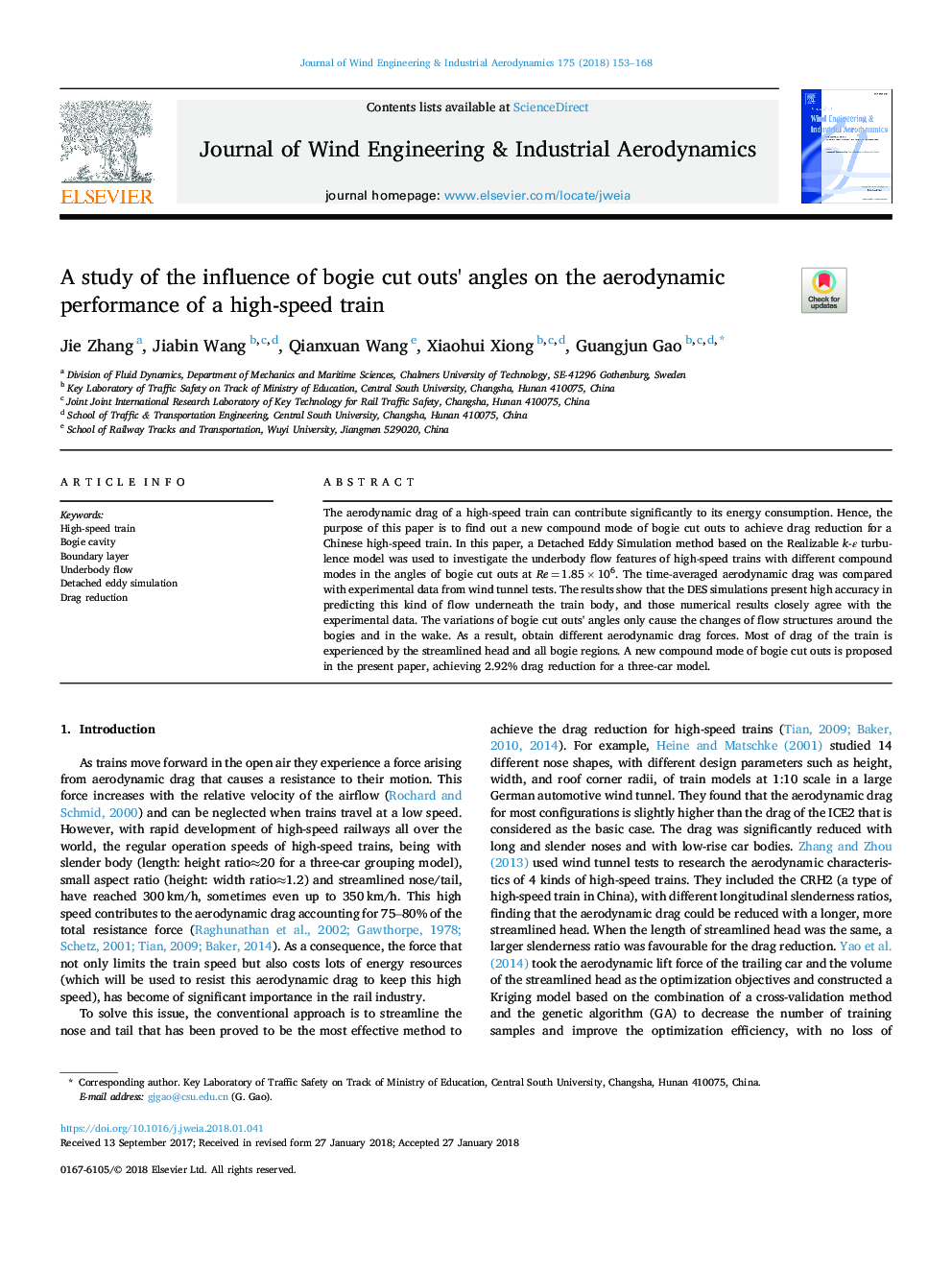| Article ID | Journal | Published Year | Pages | File Type |
|---|---|---|---|---|
| 6756962 | Journal of Wind Engineering and Industrial Aerodynamics | 2018 | 16 Pages |
Abstract
The aerodynamic drag of a high-speed train can contribute significantly to its energy consumption. Hence, the purpose of this paper is to find out a new compound mode of bogie cut outs to achieve drag reduction for a Chinese high-speed train. In this paper, a Detached Eddy Simulation method based on the Realizable k-ε turbulence model was used to investigate the underbody flow features of high-speed trains with different compound modes in the angles of bogie cut outs at Reâ¯=â¯1.85â¯Ãâ¯106. The time-averaged aerodynamic drag was compared with experimental data from wind tunnel tests. The results show that the DES simulations present high accuracy in predicting this kind of flow underneath the train body, and those numerical results closely agree with the experimental data. The variations of bogie cut outs' angles only cause the changes of flow structures around the bogies and in the wake. As a result, obtain different aerodynamic drag forces. Most of drag of the train is experienced by the streamlined head and all bogie regions. A new compound mode of bogie cut outs is proposed in the present paper, achieving 2.92% drag reduction for a three-car model.
Related Topics
Physical Sciences and Engineering
Energy
Renewable Energy, Sustainability and the Environment
Authors
Jie Zhang, Jiabin Wang, Qianxuan Wang, Xiaohui Xiong, Guangjun Gao,
